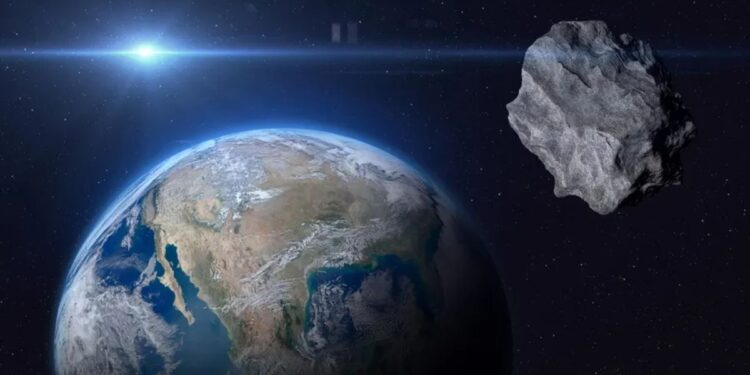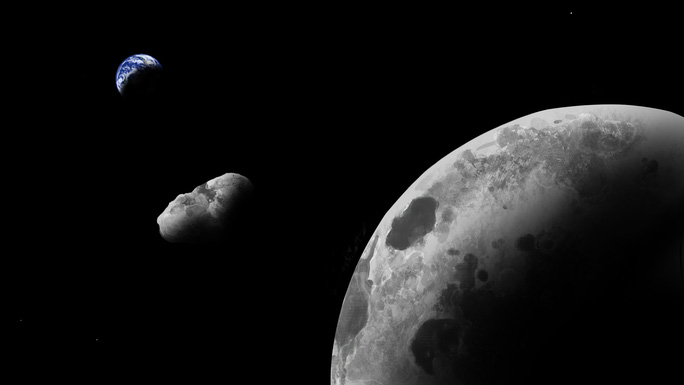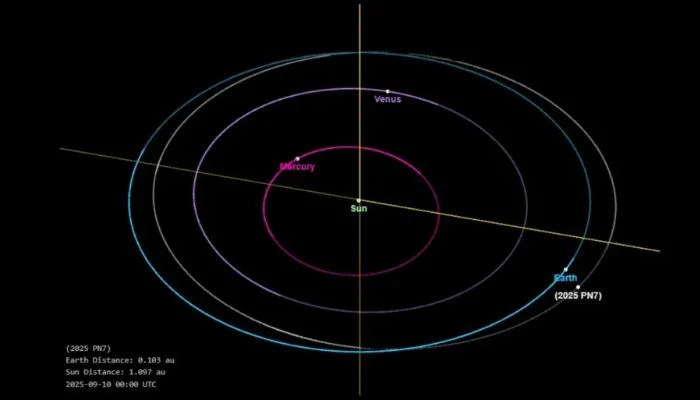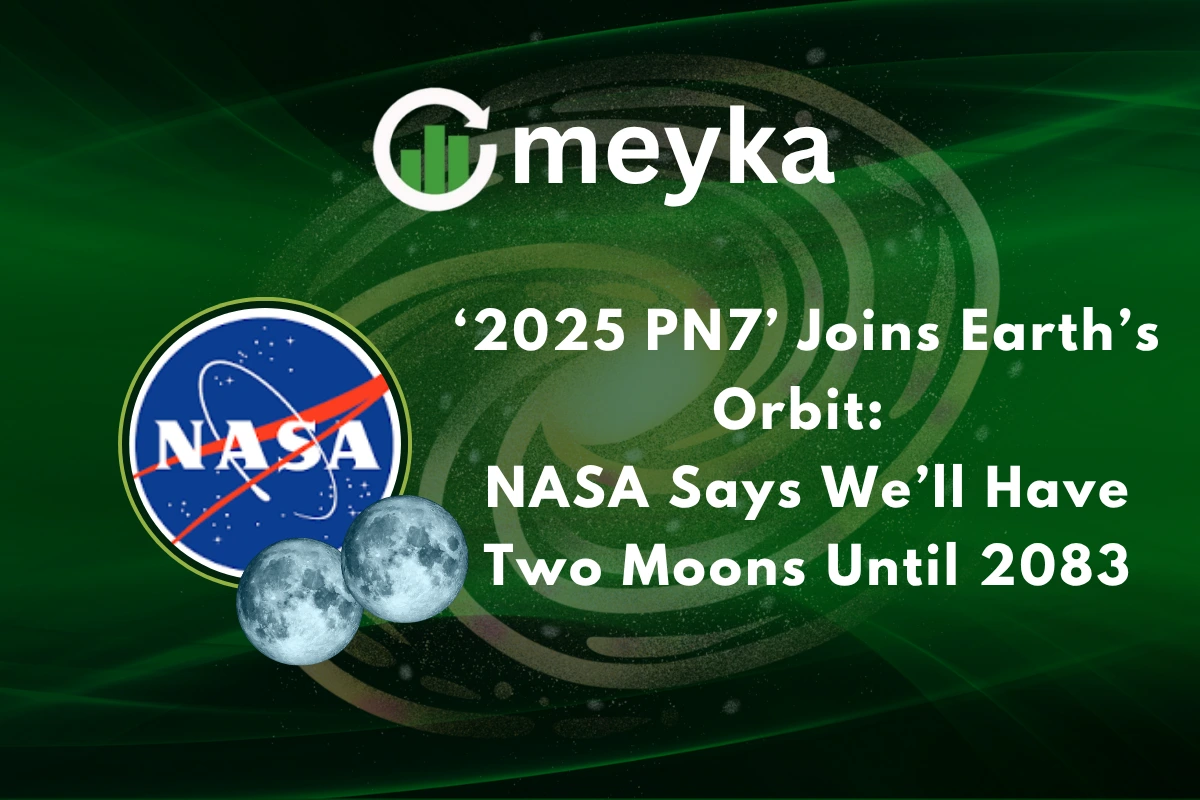‘2025 PN7’ Joins Earth’s Orbit: NASA Says We’ll Have Two Moons Until 2083
In October 2025, NASA confirmed something that sounds almost unreal: Earth has a new space companion, marking a rare two moons moment. A small asteroid named 2025 PN7 has entered a rare orbital dance with our planet. It isn’t a true moon like the one we see at night, but it moves so closely with Earth that scientists are calling it a quasi-moon. This rocky traveler was first spotted in August 2025 by the Pan-STARRS 1 telescope in Hawaii.
Researchers say it could stay in Earth’s orbit-like path until around 2083, giving us an extraordinary 60-year partnership in space. While it’s too small and distant to see without telescopes, its discovery excites astronomers around the world. 2025 PN7 gives experts a new chance to study how small asteroids interact with our planet’s orbit.
It also reminds us that space is full of hidden neighbors, quietly moving beside Earth as we travel together around the Sun.
Quick Facts About Two Moons

Astronomers first detected 2025 PN7 on August 2, 2025, using the Pan-STARRS telescope in Hawaii. Observers later pulled older images and orbital data to confirm the object’s long stay near Earth. The rock measures roughly 19 meters (about 62 feet) across, making it small but scientifically useful. Its path places it in a 1:1 orbital resonance with Earth, a classic trait of a quasi-satellite. Models show 2025 PN7 has likely shared Earth’s neighborhood for decades and could remain in a quasi-satellite state until about 2083.
What is a “quasi-moon”?

A quasi-moon looks like a moon from some viewpoints. It does not orbit Earth directly. Instead, it orbits the Sun on a path that closely matches Earth’s. That locked, 1:1 resonance makes the object appear to circle the planet for a time. Quasi-satellites are temporary. Gravity from Earth, the Sun, and other planets nudges their orbits. Some leave after a few years. Others linger for decades. 2025 PN7 fits this group.
How Astronomers found 2025 PN7?
The initial detection came from Pan-STARRS. The image was faint. The object is very dim, with a near magnitude of 26, so it hides easily from most telescopes. After the discovery, astronomers searched archival sky surveys. Older exposures showed the rock had been near Earth for many years.
Orbital calculations used current positions and past sightings. Those models place the object in a stable co-orbit for now. The discovery shows how modern surveys and careful archival work can reveal long-running visitors.
Orbit and the 2083 Estimate
Simulations of 2025 PN7’s orbit indicate a long co-orbital relationship with Earth. The models assume present gravitational influences and small perturbations from other bodies. Under those assumptions, the rock should remain in a quasi-satellite state until roughly 2083.
After that, gravitational nudges will likely alter its path and end the co-orbit. As with any small body, predictions carry uncertainty. Ongoing observations will refine the date and details.
Scientific Value of a Nearby Visitor
Even a small rock can teach a lot. Close-by near-Earth objects serve as natural laboratories for orbital dynamics. They show how resonances form and break. They also reveal composition clues about the early solar system.
Instruments can measure brightness, reflectivity, and motion. If radar observations are possible, shape and spin data may follow. For mission planners, a nearby body is a low-cost target for tests. Interest in such objects has risen since sample-return missions to tiny asteroids proved feasible. The presence of 2025 PN7 offers a clear, cheap target for study.
Mission and Exploration Opportunities
The rock’s small size and co-orbit make it attractive for future probes. A short reconnaissance mission could test guidance and sampling techniques. Scientists could attempt spectroscopy to learn about its minerals. Even a tiny sample would add to knowledge about near-Earth populations. There is also educational value.
A focused mission wins public interest and teaches about planetary defense. Budget planners may use simple cost models and analytics tools analogy to weigh mission benefits versus costs. Any mission plan must include careful safety checks and international cooperation.
Is 2025 PN7 a Threat?

No immediate threat exists. At roughly 19 meters wide, the object is too small to cause global harm. If an impact occurred, effects would be local and similar to events seen with other small asteroids: an airburst or limited surface damage. NASA and other agencies monitor near-Earth objects (NEOs) constantly. Continuous tracking reduces uncertainty and improves risk estimates. Current orbit solutions show safe distances from Earth for the foreseeable future.
Why does Two Moons go Unnoticed for Decades?
2025 PN7 is faint. With a low brightness value, it stayed below detection thresholds for most surveys. In addition, sky geometry often puts it near the Sun from Earth’s perspective, making observations hard. Only wide, deep surveys like Pan-STARRS and detailed archival searches caught its faint signal. Improvements in detection technology and new observatories such as the Vera C. Rubin Observatory will likely find more such objects in the future.
What to Watch Next about Two Moons?
Expect refined orbit solutions as more data arrives. Observers will seek radar windows and high-precision optical tracks. Scientific teams will publish updated stability studies. Public science outlets will explain any new findings and images. For accurate updates, follow the Minor Planet Center and NASA’s JPL Small-Body Database. Amateur astronomers with suitable equipment may join follow-up efforts under guidance from professional teams.
Big Picture
2025 PN7 is a reminder that Earth shares space with many small, temporary companions. These visitors help researchers test models and plan missions. They also highlight success in modern sky surveys and archival science.
The object is not a second Moon in the full sense. It is a passing neighbor that offers scientific value and public wonder. Continued tracking will sharpen knowledge about its path and how long it will remain close, currently estimated until about 2083.
Frequently Asked Questions (FAQs)
No. 2025 PN7 is not a real moon. It is a small asteroid moving with Earth around the Sun since August 2025, called a quasi-moon.
Scientists say 2025 PN7 will keep moving near Earth until about 2083. After that, gravity changes will likely push it away from our planet’s path.
No. NASA confirms 2025 PN7’s orbit is safe. It will not hit Earth in the coming decades, but experts will keep watching it closely.
The asteroid 2025 PN7 is about 19 meters wide, almost the size of a large house. It is too small to cause any major danger.
Not exactly, what appears to be a second moon is actually a small asteroid, 2025 PN7, that shares Earth’s orbit but orbits the Sun, not Earth directly.
Disclaimer: The content shared by Meyka AI PTY LTD is solely for research and informational purposes. Meyka is not a financial advisory service, and the information provided should not be considered investment or trading advice.






